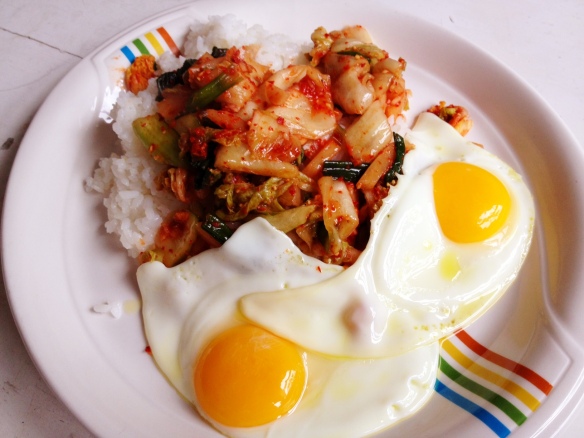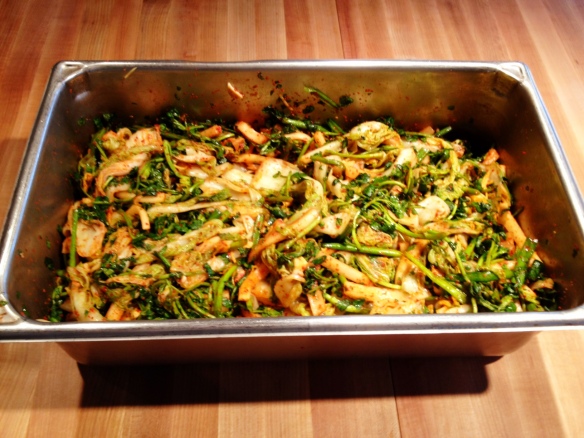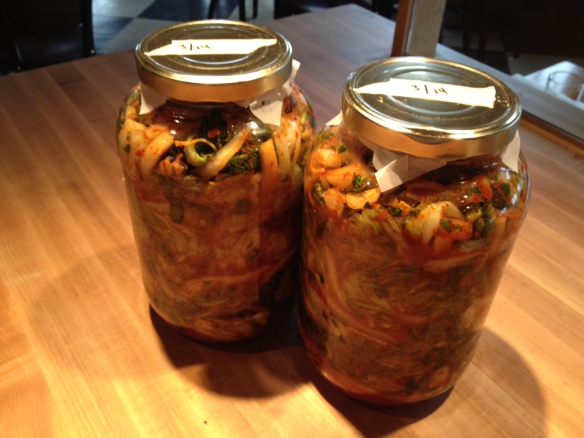It is said that no self-respecting Korean would purchase kimchi. They, instead, choose to make it at home, from scratch. Considering that it is consumed with nearly every meal in Korea, this is no surprise. In addition to being very easy to make, it is also delicious and very healthy. Ever heard of pro-biotics? Kimchi is a living food, and only improves with age. Additionally, there is no set kimchi recipe. It is more a technique with a countless number of possible ingredients than anything else. Here is a simple version of the stuff that I enjoy. Feel free to add/subtract vegetables as you like.
Kimchi
Yield: 1 gallon
Ingredients:
2 heads napa cabbage, cut into fourths, core removed
1 medium daikon radish, peeled and cut in to 3-inch sticks, ¼ inch diameter
2 bunches green onions, cut into 3-inch sticks
3 bunches watercress – I prefer wild, but hydro-cress works as well
6 bulbs garlic, sliced as thinly as possible
1 thumb ginger, peeled and fine julienned (think thin matchsticks)
2 tablespoons salted shrimp – Korean style is best but shrimp paste works as well
3 tablespoons fish sauce – I prefer Vietnamese
½ cup Korean chili flake
1 tablespoon sugar
1 cup kosher salt
Preparation:
Heavily salt the daikon radish and napa cabbage, taking care to get salt in between the leaves. Let sit out on the counter for 6 hours. This adds salt as well as draws moisture out of the vegetables. Too much residual water and you will have a very watery kimchi. Rinse thoroughly under cold water and taste to be sure you got enough of the salt out. If the vegetables are too salty, your kimchi will be too. Then squeeze as much of the water out of the cabbage and radish as you can.
Toss the cabbage and radish with the remaining vegetables. Puree the shrimp with the fish sauce and pour over the mixed vegetables. Sprinkle the chili powder and sugar over the top and toss again to distribute. Then pack the kimchi into glass jars with tight-fitting lids. You will have about one gallon. Leave the jar on the counter at room temperature to ferment with a plate underneath to catch any kimchi-water that comes out. Taste after two days. The kimchi should have a slight effervescent quality to it along with a fermented flavor. If not, leave on the counter for another day, then refrigerate. It will last in your refrigerator indefinitely, but will develop a stronger fermented “funk” to it as time goes on.
My favorite way to eat kimchi is with rice and two fried eggs, for breakfast, lunch, dinner, or even a late-night meal.
Currently reading: Everything but the Squeal: Eating the Whole Hog in Northern Spain by John Barlow
Currently listening: Black and Blue by Miike Snow






